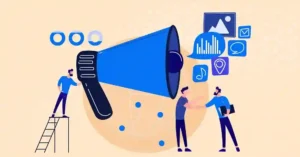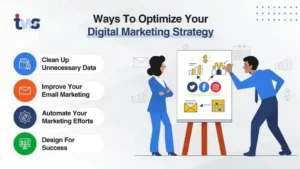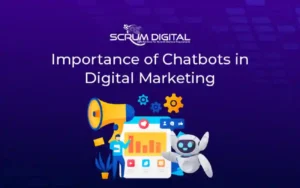Top Digital Marketing Strategies to Boost Your Brand in 2025

If you’re looking to boost your brand in 2025, you’re already on the right track. The digital marketing landscape is evolving faster than a squirrel on a double shot of espresso, and keeping up can feel like trying to hit a moving target with one hand tied behind your back. But fear not, I’ve got your back. From AI to augmented reality, the strategies you’re about to read are the game-changers that’ll give your brand the edge it needs to thrive in this fast-paced world.
1. Embrace AI and Automation for Personalized Marketing
AI is like the secret sauce to making your marketing campaigns extra spicy. I’m not talking about some far-off, sci-fi future, either—AI’s already here, and it’s smarter than that one friend who always remembers your birthday but forgets the snacks.
Take a look at AI-driven tools. Machine learning algorithms are constantly analyzing data—think user behavior, purchase history, and more—and offering insights that can shape hyper-targeted campaigns. This isn’t just about sending out generic emails; we’re talking about creating personalized experiences that feel like they were tailored just for each person.
Speaking from experience, using AI to automate processes (like email campaigns and chatbots) has been a total game-changer. Sure, it might feel weird talking to a chatbot that knows you better than your best friend (I’ve had conversations where it felt like the machine was more concerned about my wellbeing than my last boss was), but that’s the power of personalization.
The beauty of AI? It doesn’t just save time. It allows brands to connect with their audiences in ways that feel, well, human. And that’s how you’ll boost your brand in 2025—by reaching customers exactly when and where they need you.
2. Leverage Video Content for Enhanced Engagement
Okay, here’s the thing: if you’re not using video content, you’re basically telling people to go back to dial-up internet. Not cool. Video is king, queen, and the royal court in digital marketing. Studies show that videos are way more likely to get people’s attention than text-based content. And, honestly, who has the attention span for anything else nowadays? Not me—I swear I check Instagram every 15 minutes just to remember what I was doing.
Short-form videos are especially wicked, thanks to platforms like TikTok and Instagram Reels. If you can’t snag someone’s attention in 15 seconds, you might as well go home. But if you can grab them with something quirky or emotional? You’ve got a new customer. A simple brand message wrapped up in a quick video? Magic.
And let’s not forget longer-form videos on platforms like YouTube, where you can go deep and really connect with your audience. Here’s the kicker: live streaming. Whether it’s Q&As, product launches, or behind-the-scenes chaos (uh, who hasn’t had a Zoom fail during a live stream?), interactive video content brings your brand to life in a way static posts just can’t. This is how you build engagement and make your audience feel something.
3. Invest in Voice Search Optimization
So, you’re telling me that in a couple of years, half of all online searches will be done by voice? Yikes. I remember when the first iPhone came out, and I thought Siri was just a really sassy personal assistant. Fast forward to 2025, and voice search is now the new norm.
If your brand isn’t optimized for voice, you’re missing out on serious traffic. Why? Well, voice searches are often more conversational and specific. We’re talking, “Where’s the best pizza near me?” or “How do I fix a flat tire?” This isn’t your usual keyword-stuffed search query. This is more human and more local.
Pro tip: voice search SEO focuses on natural language. Long-tail keywords are your best friend here, and don’t be afraid to structure your content in a way that answers questions directly. Optimizing for voice search means your audience can find you easily when they shout their queries at Siri—no joke.
4. Utilize Augmented Reality (AR) for Product Demos
Speaking of future tech, AR is not just for video games anymore. It’s making waves in the marketing world, and I’m all about it. Imagine trying on clothes or testing out furniture without ever leaving your couch. That’s AR for you—bringing the store to your living room. I still remember the first time I saw an AR app that let me “try on” sunglasses virtually—it was so real, I kept moving my head like a weirdo in my living room trying to see the reflection.
This tech isn’t just fun; it’s practical. AR allows customers to interact with your product in a way that’s immersive and engaging. For example, furniture brands let you place 3D models of their products in your own space before making a purchase. So cool, right? When AR is implemented properly, it boosts conversions and customer trust—two things that’ll help you boost your brand in 2025.
I mean, I could keep going, but I don’t want to sound like a total AR nerd… but seriously, try it.
5. Capitalize on Social Media Trends and Platforms
Raise your hand if you still remember when Facebook was just for college students. No? Well, it was, and now it’s just one of the countless platforms businesses use to get their message out there. Social media changes faster than a New York minute, and in 2025, the trick is to jump on trends as soon as they emerge.
Whether it’s TikTok dances (no, I will not be participating in the #Renegade), viral memes, or jumping into new platforms (ever heard of BeReal?), staying active on social media means staying relevant. Here’s the kicker: it’s not just about posting your product. It’s about showing up in fun, authentic ways that engage your audience. Behind-the-scenes content, polls, giveaways—hella fun stuff like that gets people to interact with you.
Oh, and let’s not forget influencer marketing. But here’s the thing: it’s not just about picking whoever has the most followers. It’s about finding influencers whose values align with your brand. Their audience? They’ll be yours too.
6. Focus on Sustainability and Ethical Marketing
So, I get it: 2025 might sound far off, but the shift toward sustainability is already happening. I remember the first time I bought a bamboo toothbrush. Not gonna lie, I was a little skeptical—will this thing even work? But turns out, I’m now way more invested in eco-friendly products than I ever thought I would be. And trust me, I’m not the only one.
In fact, by 2025, consumers will increasingly be making purchasing decisions based on sustainability and ethical practices. My friend Clara refuses to shop anywhere that doesn’t have a solid environmental policy. So, if you’re not talking about your sustainability efforts, you’re probably losing sales.
Be real about what your brand is doing to protect the planet, whether it’s cutting carbon emissions, using recycled materials, or giving back to communities. And remember, transparency is key. Customers want to know you’re walking the walk. So, get on the sustainability train, or risk missing it.
7. Invest in Data-Driven Marketing
Data. It’s not just a buzzword. It’s the heartbeat of your marketing campaigns. You know those weird ads that seem to read your mind? Yeah, that’s data at work. While it may seem like magic, it’s just the power of big data and analytics. In 2025, businesses will rely even more on data to fine-tune their strategies.
For instance, analyzing customer behavior, website traffic, and previous campaigns can help you figure out what’s working and what’s not. Take it from me, last year’s campaign—uh, didn’t go as planned. But once we started really looking at the numbers, we tweaked things and saw a much better return.
I’m not saying you need to become a data scientist, but using the right tools will help you understand your audience like never before.
8. Build a Strong Omnichannel Presence
No, it’s not enough to just have a Facebook page and call it a day. People engage with your brand across multiple platforms—email, social media, your website, mobile apps, etc. By 2025, seamlessness will be the name of the game. So, whether someone is checking out your Instagram on their lunch break or buying something off your site at 2 a.m., your brand needs to deliver a consistent experience across all channels.
If your brand isn’t meeting customers where they are, you’re already behind. Personalization, quick responses, and a smooth transition between touchpoints are crucial. Trust me—your customers will appreciate the effort.







